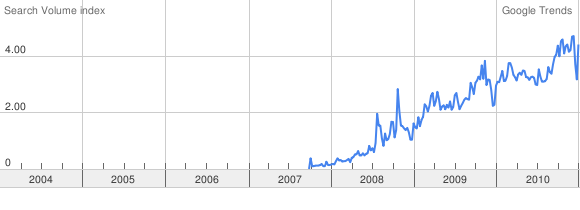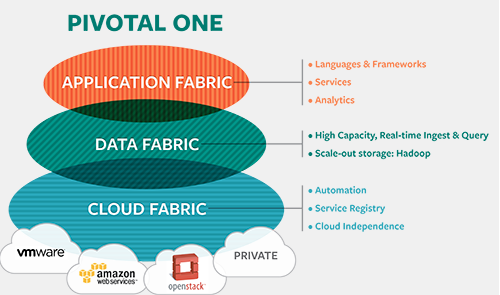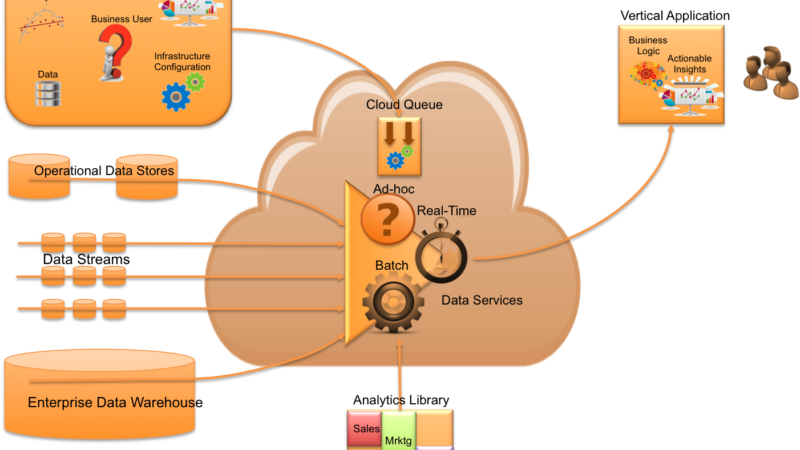Cloud Prophecies: The Cloud Era
What is going to happen in the area of “cloud computing”?
The real buzz didn’t start until 2007, a year after Amazon launched. Since then we’re seeing a consistent growth in discussion (hype, buzz, etc.) on the Internet around Cloud Computing.
As Andrew McAfee writes in the Harvard Business Review, we passed a tipping point in 2010 and moved into a new age of technology use, the “Cloud Era“.
In 2011, I believe we will continue to see a rise in discussion around terms like IaaS, PaaS, SaaS, and public, private, hybrid cloud….but with a new emphasis around applications emerging.
When we look back at 2010, I believe we see the following “mega” trends:
- Organizations of all sizes (big and small) embrace established SaaS
- Small and medium sized businesses embrace public cloud infrastructure as a service (IaaS) and platform as a service (PaaS)
- Large organizations play safe with private clouds (IaaS and PaaS)
- Enlightened organizations consider hybrid clouds (a combination of private, virtual private, and public)
Small and medium sized businesses have been early adopters of public cloud services. We’ve seen the Software as a Service (SaaS) point applications deliver on a Pay as You Go monthly subscription model for a number of enterprise software categories including:
- Sales Force Automation (eg. Salesforce.com and SugarCRM),
- Accounts (eg Workbooks, Netsuite and SAP Business ByDesign),
- Colloboration (eg Microsoft BPOS and Huddle),
- HR (eg Workday, SuccessFactors),
- Project Management (eg Clarizen),
- Product Management (eg Arena),
- Learning (eg Cornerstone), and
- IT Service Management (eg Service Now).
SMB businesses gain the benefit of software features and best practice procedures previously only affordable by much larger companies.
Larger organisations have also began to start using point solutions in an effort to gain instant access to increased business agility and avoid the bottlenecks within their own IT organisation. The CIOs in large companies are rightly concerned about the application of their security and compliance standards to protect sensitive data.
The leading IT companies including HP, IBM, Oracle and Dell in a bid to defend their installed base of legacy on-premise servers have announced private cloud solutions where users can access flexible and elastic IT infrastructure housed on Blade servers in their existing datacentres and guarded by their firewalls and policy controllers.
Some of the larger organisations have been experimenting with combining some elements of the public cloud with their legacy, firewall-protected applications to create private clouds and begin looking at hybrid clouds.
Cloud Prophecies
General Industry Views:
- SaaS offerings will dominate market (greater value with the end-user application)
- Private Cloud Will Drive the Bulk of Revenue in the datacenter (sorry Amazon)
- Platform as a Service = Application Focus = $True Value (IaaS is dead)
Customer Segmentation in 2011:
- Financial will drive commercial innovation in Private Cloud
- Government and Manufacturing will lead in Public Cloud (SaaS)
- Power of IT shifts to Application Developers
Future of Channel:
- System Integrators turn into Managed Service Providers (with Cloud)
- SIs are the gateway into large enterprise for new cloud vendors
- Open (driving more commodity) will become key For the Channel
Views of Others
The analystis:
IDC (Frank Gens, IDC Predictions Team)
- Worldwide IT spending growth will be a solid 5.7% as hardware growth moderates and software and services spending rebounds.
- Emerging markets, led by China, will continue to drive global IT spending growth, with 2.6 times the growth rate of developed markets, contributing over 50% of all new growth.
- Public and private cloud adoption will surge as two cloud “power position” battles enter high gear and “cloud computing” (as a buzzword) gets ready to fade.
- Cloud-driven datacenter transformations will pick up speed, with continuing integration of datacenter systems and “stacks,” the arrival of “cloud ready” enterprise software, and a rising focus on service providers (SPs) as strategic customers.
- The mobility explosion will continue — with huge device volumes, new form factors, and millions (yes, millions) of mobile apps.
- Broadband networks will struggle — and innovate — to keep up as 4G wireless networks crawl to market, Ethernet exchanges mitigate wired bandwidth squeezes, and content delivery networks (CDNs) gain clout.
- 2011 will be a year of consolidation and convergence for social business software vendors as well as a year of strong social networking adoption growth in small and medium-sized businesses (SMBs).
- The expanding digital universe — reaching 1.8 trillion gigabytes — will drive demand for cloud-friendly information infrastructure and real-time analytics for “big data.”
- “Intelligent industries” will put mobility and social networking to work to capture the surge in holiday mobile shopping, lay the groundwork to support the explosion in mobile payments, and enable next-generation healthcare.
- The IT and media industries will aggressively position for consumers demanding “I want my Web TV!” with Web-connected TVs, a battle among media/entertainment clouds to be your next (virtual) cable company, and explosive growth in mobile advertising.
- And The Empowered Shall Lead Us
- You will build a private cloud, and it will fail
- Hosted private clouds will outnumber internal clouds 3:1
- Community clouds will arrive, thank to compliance
- Workstation applications will bring HPC to the masses
- Cloud economics gets switched on. Being cheap is good.
- The BI gap will widen
- Information is power and a new profit center
- Cloud standards still won’t be here — get over it.
- Cloud security will be proven but not by the providers alone
- By 2015, a G20 nation’s critical infrastructure will be disrupted and damaged by online sabotage
- By 2015, new revenue generated each year by IT will determine the annual compensation of most new Global 2000 CIOs
- By 2015, information-smart businesses will increase recognized IT spending per head by 60 percent
- By 2015, tools and automation will eliminate 25 percent of labor hours associated with IT services
- By 2015, 20 percent of non-IT Global 500 companies will be cloud service providers
- By 2014, 90 percent of organizations will support corporate applications on personal devices
- By 2013, 80 percent of businesses will support a workforce using tablets
- By 2015, 10 percent of your online “friends” will be nonhuman
A collection of visionaries:
- System Integrators are adding Managed Services (aka buying/building datacenters)
- Resellers are becoming MSPs (Adam Famularo, GM, Cloud, CA)
- Open cloud is a must (John Engates, CTO, Rackspace)
- Industry-specific clouds (Lew Tucker, CTO, Cloud Compting, CISCO)
- Enterprise Cloud Architecture is a must (Guy Naor, CTO, Morphlabs)
- Cloud-based application stores (Pat O’Day, CTO, BlueLock)
- Cloud and Mobile (John Barnes, CTO, Model Metrics)
- Fortune 1000 will aggressively move into cloud (Ed Laczynski, VP, Cloud Strategy, Datapipe)
- Avoiding Vendor Lock-In (Tom Flink, SVP of Channel, Citrix)
- 10. Cloud requires Speed of Change (Len Couture, Manaing Director, Bluewolf)
- 11. Mobile is the Gateway into Cloud Services (Mark Koenig, Dir of Cloud Strategy, Appirio)
- 12. 100% Browser-based Applications (Stephen Cho, Dir of Google Apps Channels)
Dr. Stephen Herrod, CTO at VMware
- The line between private and public clouds will blur
- Software-as-a-Service (SaaS) offerings will continue their march into enterprises, and IT departments will demand solutions that give them more control over their access
- New devices will also continue their march into enterprises, also leading enterprises to demand help
Charles Babcock , InformationWeek
- PCI in the Cloud
- Multi-Hypervisor Support
- Cloud Monitoring Will Take Stage
- Telecoms and Cloud – a better SLA?
- Data Integration and Cloud
Cloud Service Providers:
- Managed Services and Cloud
- SaaS versus PaaS and IaaS for SMB
- OpenStack Adoption Grows
- Emerging economics & cloud
- More services for applications (IaaS -> PaaS)
End Users:
- Cost & transparency
- More public vs. private cloud confusion
- More hybrid cloud architectures
- New application architectures (in private cloud)
- Application groups will want public cloud, dynamic resourcing/services, and scale.
- Leading cloud incumbents will diversify into adjacencies
- Cloud vendors will focus on the global cloud
- Legacy vendors without true Cloud architectures will continue to cloud wash with marketing FUD
- Tech vendors will make the shift to Information Brokers
- Everyone will take the SaaS offensive
- On-premise enterprise ISVs will push for a private cloud
- Money and margin will come from verticalized cloud apps
- Many legacy vendors might not make the transition to cloud and will be left behind
- Social cloud emerges as a key component platform
- 10. Battle for PaaS begins with developers
- 11. Vendors must own the platform (both DaaS and Saas) to survive
- 12. Tension between indirect channel partners and vendors in the cloud will only increase
- 13. PaaS will be modularized and niche
- 14. Mobile app development will move to the cloud
- 15. Cloud management will continue to grow and consolidate
- 16. Cloud storage will be a hot cake
- 17. NoSQL will skyrocket in market share and acceptance
General Trends Reflect Natural Maturation Of The Cloud Market
- Replace most new procurement with cloud strategies.
- Start with private clouds as a stepping stone to public clouds.
- Get real about security.
- Move to private clouds as a back up to public clouds.
SaaS (Consumption Layer) Emerges As The Primary Access To Innovation
- Begin the transition from best of breed purpose built solutions to cloud mega stacks – vendors with both the best PaaS platform and ecosystem will win.
- Access to deep industry vertical solutions will play a key role in this migration.
- Leverage apps market places and ecosystems for the last mile.
- Acknowledge that superior user experience and scale won’t be mutually exclusive.
DaaS (Creation Layer) Addresses the App Dev Needs Of The Advanced Customer
- Shift all new custom app development to the cloud.
- Expect DaaS and PaaS to merge in 2011.
- Expect truly open PaaS platforms to provide more choices in 2011.
- Bet on integration vendors with extensive libraries that move beyond data integration.
- Deliver consumer tech features into the enterprise.
IaaS (Infrastructure Layer) Aims To Reduce Complexity And Simplify Management
- Demand better virtualization.
- Simplify the overall technology landscape.
- Access archival data online.
- Oracle buys Salesforce.com
- The cloud enables hackers
- Subscription prices fall sharply
- The U.S. government gets its cloud act together
- Less focus on definitions (and dare we say hype?)
- Getting down to work
- Acquisitions of start-ups will continue apace
- More nuance in security discussions
- Cloud computing brings together trends in both technology and IT operations
- Look for a greater depth and breadth of providers entering the arena, particularly from CSPs and the IT Channel
- Cloud comes into focus for Small Businesses
- Syndication for Cloud Services
- The Dark Horse – All you can eat cloud
Henrik Rosendahl (CEO, Pancetera)
- Host-Based Replication Takes Off
- VM Mobility Becomes a Reality
- Cross Platform Tools Proliferate
John Barnes (CTO of Model Metrics)
- Large consultancies (e.g. Accenture, Deloitte) will continue to push private cloud and have minimal success with the public cloud
- User demand for access to cloud-based content and applications whether on a PC, laptop, tablet or smart phone will grow
- Adobe AIR will gain recognition as a leading cross platform mobile technology
- Amazon Web Services will continue to innovate to become more enterprise friendly and gain traction within large corporations
Ellen Rubin (Founder and VP Products, CloudSwitch)
- Movement of applications between cloud environments will emerge as a critical requirement
- Networking bandwidth will become the new bottleneck
- Security will remain a key concern, but no longer a show-stopper
- True “bang for the buck” analyses of the cloud will be conducted
- More clouds, more fun
Skip Bacon (CTO of Virtual Instruments)
- 2011 will still primarily be a year of experimentation with private clouds
- From “VM Stall” to “VM All”
- VM and the Seven Dwarfs
- Green Fields and Clean Slates
- Big Data
- The Age of Analytics
David Greschler (Director of Virtualization and Cloud Strategy Microsoft’s Server and Tools Business)
- One size can’t and won’t fit all
- You don’t have to start over
- End-to-end management will become a core requirement
- Cost and value will continue to be important
- Start small – build for the future
Jeremy Geelan (President & COO of Cloud Expo)
- Movement of applications between cloud environments will emerge as a critical requirement
- Networking bandwidth will become the new bottleneck
- Security will remain a key concern, but no longer a show-stopper
- True “bang for the buck” analyses of the cloud will be conducted
- heterogeneity in the cloud provider market
- cloud deployments is likely to accelerate in the coming year.
- But, half won’t commit for five years
- even split between Microsoft Azure Services Platform, Google App Engine and Amazon Web Services
- new administrative teams dedicated to supporting cloud services.
- IT will adopt e-mail cloud services first
- IT organizations are not involved in, and may not even be aware of, all cloud services used within their enterprises.
- IT organizations will underestimate the need for proper contingency planning for service outages.
- Use of federation to share identity information across domains
- E-discovery, compliance and security will drive increased Exchange support spending
- 10. Server, then desktop and then storage virtualization
- 11. an increasing shift from cost-cutting purchases to more opportunity-based technology investments.
- Generalized Cloud Hype Reaches its Peak
- IaaS Enters Tornado Among Service Providers
- Private Cloud Makes Strides with Early Adopters in the Enterprise:
- Monitoring and Service Assurance Competes with Orchestration for the Cloud Management Topic of the Year:
- VMware vCloud and OpenStack Lead the Way Among Cloud Platforms:
- 2011 is the Year of PaaS
- A new PaaS category will emerge – Building your own PaaS
- Application Servers will Change Their Name to PaaS – But Won’t Change Their Stripes
- VMForce Will Fail to deliver on its promise
Prediction 1 (87% Up / 13% Down): “Vendors that provide cloud integration tools and professional services will be key acquisition targets because they represent a critical component in pulling the various cloud piece-parts together.” (Source: THINKStrategies)
Prediction 2 (81% Up / 19% Down): “2011 will be the year when industry giants from across the spectrum — including major financial institutions, pharmaceuticals and retailers — will migrate major internal and external IT systems to the cloud.” (Source: CRN)
Prediction 3 (77% Up / 23% Down): “The Cloud Computing market will grow more rapidly than analyst firms forecast as organizations move from asking ‘what is cloud and why is it important?’ to ‘where and how can I capitalize on the cloud today!?!’” (Source: THINKStrategies)
Prediction 4 (73% Up / 27% Down): “Mobile devices become the primary means of accessing enterprise cloud applications, just as they’ve become the primary means of accessing the internet. This has huge implications for how applications are built and how business gets done.” (Source: CRN/Appirio)
Prediction 5 (73% Up / 27% Down): “Cloud security will be proven but not by the providers alone. Because cloud security isn’t their responsibility – it’s shared. The cloud-leading enterprises get this…The best practices for doing this will spread in 2011.” (Source: Forrester)
Prediction 6 (72% Up / 28% Down): “Community clouds will arrive… The biotech field is already heading this direction. Federal government teams are piloting them. And security and compliance will bring them together. Why struggle alone adapting your processes…?” (Source: Forrester)
Prediction 7 (70% Up / 30% Down): “Social networking will become a required component of enterprise applications, driven by the success of salesforce.com’s Chatter.” (Source: THINKStrategies)
Prediction 8 (69% Up / 31% Down): “2011 will see an unprecedented escalation of the cloud wars, with vendors on all sides pushing their proprietary cloud stacks. Channel partners should be on guard to avoid lock-in…” (Source: CRN)
Prediction 9 (69% Up / 31% Down): “Corporate decision makers shift their focus from reliability, security and integration concerns to strategic and tactical governance issues: planning, selection, deployment, monitoring and evaluation, optimization and monetization of cloud initiatives.” (Source: THINKStrategies)
Prediction 10 (65% Up / 35% Down): “Rate of cloud company failures and M&A activities will escalate. Many startups are unable to keep pace with rising customer expectations and intensifying competition. Established players accelerate their development efforts via acquisitions.” (Source: THINKStrategies)
Prediction 11 (65% Up / 31% Down): “Information is power and a new profit center. Not only will cloud computing help leading enterprises gain greater insight from their information, it will help them derive revenue from it…What value data are you keeping locked up in your vault?” (Source: Forrester)





5 thoughts on “Cloud Prophecies: The Cloud Era”
Comments are closed.